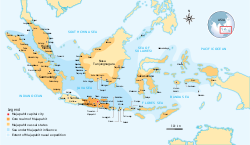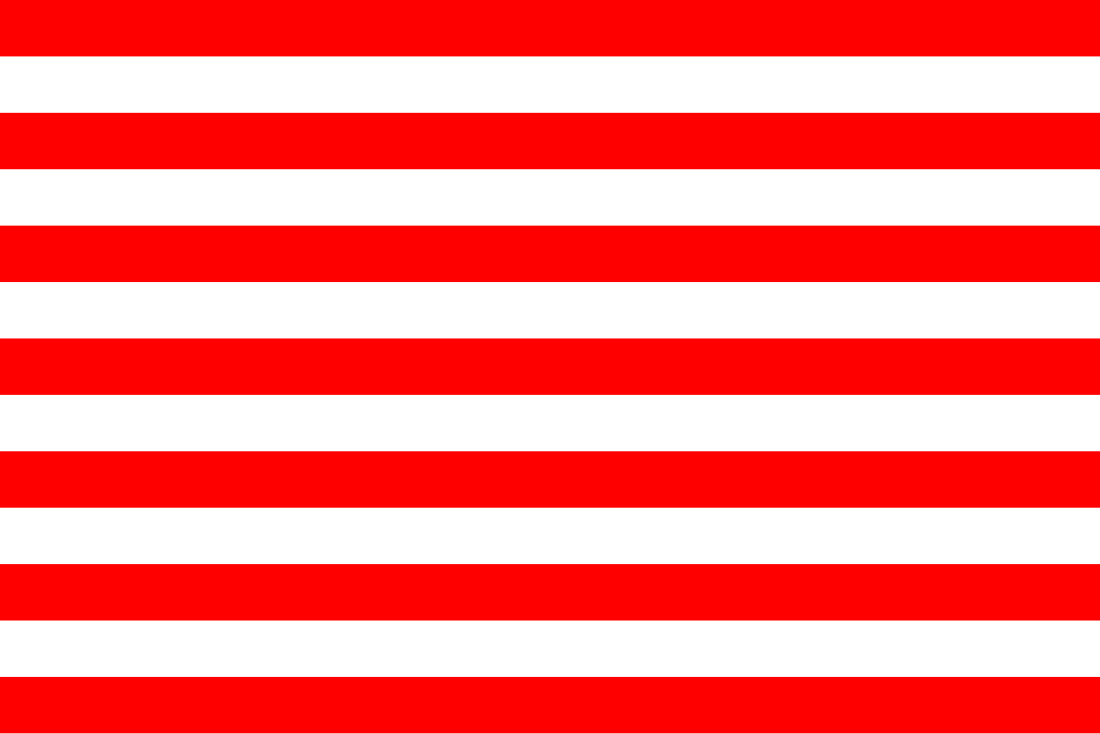Majapahit
Empire of Javanese, based in Majakarta (Mojokerto) From Wikipedia, the free encyclopedia
Majapahit (Javanese: ꦩꦗꦥꦲꦶꦠ꧀; Javanese pronunciation: [madʒapaɪt]), also known as Wilwatikta[note 4] (Javanese: ꦮꦶꦭ꧀ꦮꦠꦶꦏ꧀ꦠ; Javanese pronunciation: [wɪlwatɪkta]), was a Javanese Hindu-Buddhist thalassocratic empire in Southeast Asia. It was from the island of Java in modern-day Indonesia. It existed from 1293 to around 1527. It was strongest during the era of Hayam Wuruk. He took over many places in Southeast Asia during his reign from 1350 to 1389. According to the Nagarakretagama (Desawarñana) written in 1365, Majapahit was an empire that had land from Sumatra to New Guinea.[5][6][7], Spanning across 2 Continents, It had territory in present-day Indonesia, Singapore, Malaysia, Brunei, southern Thailand, East Timor, and southwestern Philippines (the Sulu Archipelago).
Majapahit Empire | |||||||||
|---|---|---|---|---|---|---|---|---|---|
| 1293–1527 | |||||||||
Royal colors[note 1]
| |||||||||
 The greatest extent of Majapahit influence based on the Nagarakretagama[2] in 1365 | |||||||||
| Capital | Trowulan, now Mojokerto | ||||||||
| Common languages |
| ||||||||
| Religion | |||||||||
| Government | Absolute monarchy | ||||||||
| Maharaja | |||||||||
• 1293–1309 | Raden Wijaya | ||||||||
• 1309–1328 | Jayanegara | ||||||||
• 1328–1350 | Tribhuwana Wijayatunggadewi | ||||||||
• 1350–1389 | Hayam Wuruk | ||||||||
• 1389–1429 | Wikramawardhana | ||||||||
• 1429–1447 | Suhita | ||||||||
• 1447–1451 | Kertawijaya | ||||||||
• 1451–1453 | Rajasawardhana | ||||||||
• 1456–1466 | Girishawardhana | ||||||||
• 1466–1474 | Suraprabhawa | ||||||||
• 1474–1498 | Girindrawardhana | ||||||||
| History | |||||||||
• Coronation | 10 November[3] 1293 | ||||||||
• Demak takeover | 1527 | ||||||||
| Currency |
| ||||||||
| |||||||||
Majapahit was one of the last big Hindu-Buddhist empires of the region. It is said to be one of the greatest and most powerful empires in the history of Indonesia and Southeast Asia. Its influence went outside the modern territory of Indonesia and has been studied a lot.
Notes
- Red and white is the royal color of Majapahit. How the color was used by Majapahit is still disputed, see the related article for explanation.
- Surya Majapahit (the Sun of Majapahit) is the emblem commonly found in Majapahit ruins. It served as the symbol of the Majapahit empire.
- Surya Majapahit (the Sun of Majapahit) is the emblem commonly found in Majapahit ruins. It served as the symbol of the Majapahit empire.
- Some Javanese court literatures uses this Old Javanese name, which bears the same meaning as "Majapahit", for example in Nagarakretagama canto 1 stanza 2 and Kidung Harsawijaya. It is sometimes also written backwards as Tiktawilwa, for example in Nagarakretagama canto 18 stanza 4. However it is still more widely known by its Javanese name, as recorded in the hikayats of Aceh, Banjar, Malay, Palembang, etc.
References
Bibliography
Other websites
Wikiwand - on
Seamless Wikipedia browsing. On steroids.


